- Home
- Orhan Pamuk
Other Colors Page 21
Other Colors Read online
Page 21
By now the man standing outside the door, staring at the sign, is well aware that he has fallen into a trap, allowed himself to be demeaned by the door, which had not concerned him in the least only moments earlier, when he was wandering so happily down the street. He is almost tempted to laugh at his own fragility, at the ease with which he can take offense. He has enough of a sense of humor to do this; but still he feels compelled to show that this small and unnecessary insult, this distressing prohibition, is uncalled for. The people who put up this NO ENTRY sign—did they realize, when they set out to safeguard their security, their virtue, their uniqueness, that their act would insult and trouble others? The man looking at the sign now decides that those who put it up had just this aim in mind. It was to cause people like himself just this sort of disquiet that they had hung a NO ENTRY sign on their door. They’d achieved their aim: There is a growing disquiet on the other side of the door. Then, in an instant, he sees the bigger picture. Yes, it’s possible that the people who hung up the sign might not have foreseen this disquiet, that all they had wanted was to protect themselves, distinguish themselves from those outside. But they must have known that this would cause heartbreak and greatly upset people. In that case, there was a certain heartlessness to it all—these people thought too much of themselves, giving no thought to the disquiet, the misery, that their actions might cause.
Above all, I dislike people who think only of themselves, thinks the man, who is still troubled by the sign. We might say that he is not so much troubled by the sign as by his own nature, by things hidden deep in his soul. If we can entertain this thought, then he can too, and perhaps he is doing so at this very moment. But this is not the sort of thinking that comes easily—for it leads to the thought that the reason for the disquiet you feel inside might be your own inadequacy, your own shortcomings. For now the man standing outside the door is thinking that the people who hung up the sign foresaw that it would be insulting enough to stop someone like him in his tracks, and this makes the anger inside him grow stronger. But still he is thinking clearly enough to think that his anger is not wholly justified.
CHAPTER FORTY-SEVEN
Where Is Europe?
I’m walking down a street in Beyoğlu, the most European neighborhood on the European side of Istanbul, when I happen upon a used bookseller. I know this narrow, meandering street, with its modest repair shops, its little mirror and furniture stores, and its humble restaurants. This is a new place, so I go inside.
What I find is nothing like the old Istanbul secondhand booksellers who dealt in dusty manuscripts as well as other printed matter; there are no dusty book towers, no mountains waiting to be priced. Everything is as clean and beautifully arranged as in the antiques shops that have begun to proliferate in the area; the books have even been classified. So this is an “antiquarian” bookseller of the type that has begun to replace the old merchants in this area. I gaze disconsolately at the shelves, on which bound books stand to attention like soldiers in a modern, disciplined army.
In one corner I notice a long shelf of Greek lawbooks. They must have belonged to a Greek lawyer who died or moved to Athens long ago, and as there are not very many Greeks left in the city who might be interested in buying these old lawbooks, I guess that the bookseller has chosen to display them on his empty shelves because of their handsome bindings. I pick them up and caress them, impressed not so much by their bindings or their contents as by the fact that the original owners might have traced their lineage as far back as the Byzantine Empire; then I notice the books sitting next to them. Here are all eight volumes of Albert Sorel’s early twentieth-century opus, L’Europe et la révolution française. I come across this one often in secondhand bookshops. Having discovered their relevance to our times, the novelist Nahit Sirri Örik translated these thick tomes into Turkish, and they were then published by the Westernizing republic’s National Education Ministry. No matter what language they speak in their homes—be it Greek, or French, or Turkish—a good many Istanbul intellectuals have read this work, but, as I know only too well, they did not read them as a French reader might, seeking connection with their memories and their own pasts, but rather searching within the pages for some sense of their future, of their European dreams.
For people like me, who live uncertainly on the edge of Europe with only our books to keep us company, Europe has figured always as a dream, a vision of what is to come; an apparition at times desired and at times feared; a goal to achieve or a danger. A future—but never a memory.
So too my own memories of things European, to the degree that I am able to dramatize them, are less memories than figments of a dream: I have no real memory of Europe. What I have are the European dreams and illusions of a man who has lived out his life in Istanbul. When I was seven, I spent a summer in Geneva, where my father was working as an engineer. Our house stood among the roofs rising above the eponymous fountain, and the first time I heard church bells, I felt myself not inside Europe but within Christendom. Like Turks who go to Europe to spend the money they’ve earned in the tobacco trade, and like so many others who go seeking political or economic refuge, I too walked the streets of Geneva in amazement and admiration, unaccustomed, perhaps, to feeling quite so free, but my recollections of what I saw in shop windows, cinemas, people’s faces, and the streets of the city are memories of my first glimpse of an imagined future. For people like me, Europe is only interesting as a vision of the future—and as a threat.
It is because I am one of many intellectuals on the edge of Europe obsessively engaged with this future that I am able to find Sorel’s history for sale in Istanbul’s booksellers. When Dostoyevsky published his impressions of Europe in a Russian newspaper a hundred and thirty years ago, he asked, “Of Russians who read magazines and newspapers, who does not know twice as much about Europe as Russia?” and then he added, half in anger, half in jest, “Actually, we know Europe ten times better, but I said ‘twice as much’ so as not to offend.” This troubled interest in Europe is, for many intellectuals living on its periphery, a tradition that goes back centuries. To some, it was a sort of overreaching that Dostoyevsky deemed offensive, while others saw it as a natural and inevitable process. The quarrel between these two approaches has fostered a literature that is at times ill-tempered and at times philosophical or ironic, and it is to this literature, and not the great traditions of Europe and Asia, for which I feel greatest affinity.
The first rule of this tradition is that everyone must take a side. The debate about Europe has a long history in Turkey and was revived in 1996—after the Islamist Refah Party became part of a coalition government—and each new round begins with an attempt to define and reject both the dream version of Europe and the nightmare. Everyone—be he liberal or Islamist, socialist or socialite—has something to say on the matter, and I have heard so many admonishments about which Europe we should be discussing—humanist Europe, racist Europe, democratic Europe, Christian Europe, technological Europe, rich Europe, the Europe that respects human rights—that I often feel like the child so bored by dinner table discussions about religion that he abandons all faith in God; there have been times when I’ve wished to forget everything I’ve ever heard on this subject. But I would still like to share a few memories with my European readers and a few secrets about the private lives of people living on the edge of Europe. Here are a few ways in which we who live in Istanbul assert our European selves:
1. An expression I’ve heard in my upper-middle-class Westernized family since childhood: “This is how they do it in Europe.” If they’re drafting a new law on fishing, if you’re choosing new curtains for your home, or hatching an evil plan against your enemies, utter these mysterious words, and you can bring any discussion of method, color, style, or content to an abrupt end.
2. Europe is a sexual paradise. Relative to Istanbul, this is a pretty accurate guess. As with many bookish compatriots, my first sight of a naked woman was in an illustration in a magazine imported from E
urope. This is surely my first and most striking memory of Europe.
3. “If a European saw this, what would he think?” This is both a fear and a desire. We are all afraid that when they see how we do not resemble them, they will castigate us. This is why we want there to be less torture in prisons, or at least torture that leaves no trace. Sometimes we want to take pleasure in showing them just how different we are from them: as when we want to meet an Islamist terrorist, or when we want the first person to shoot the pope to be a Turk.
4. After saying, “Europeans are very courteous, refined, cultured, and elegant,” people will often add, “But when they don’t get what they want …” and the example they offer will reflect the degree of their nationalist anger: “When my Paris taxi driver found my tip to be too small …” or “Didn’t you know that they also organized the Crusades?”
The Europe that figures in all such propositions is a place of all-or-nothing. For those like myself who live on its edge and sustain an obsessive interest in it, it is before all else a dream forever changing its face and character. My generation, and the generations that came before us, have for the most part believed in this dream more fervently than Europeans themselves. This was before Turkey’s negotiations with the European Union became so intense and troubled.
Since I have lived all my life on the European shores of Istanbul—in other words, in Europe—it is not at all hard for me to feel myself a European in the geographical sense. But in Istanbul booksellers like the one I explored while writing this essay, the only sign of this identification is the book of Albert Sorel’s, translated into Turkish in the last century. Do people now refrain from asking for La question d’Orient au dix-huitième siècle because this book was published in the Arabic script, which none of us can read now, on account of Turkey’s having adopted the Latin alphabet in the early years of the Republic, so as to be more European? Or is it because we have come to see Europe as far too troubling and problematic in ways undreamt of before? I cannot say.
CHAPTER FORTY-EIGHT
A Guide to Being Mediterranean
It was the early sixties; I was nine years old. My father was driving the whole family—my mother, my brother, everyone—from Ankara to Mersin in an old Opel. After traveling for many hours, I was told that in a short while I would have my first glimpse of the Mediterranean, and I would never forget it. As we passed among the last peaks of the Taurus Mountains, I kept my eyes on the road that our map described as stabilized; as I watched it snake across the yellow hills, it happened: I caught sight of the Mediterranean, and I’ve never forgotten it. In Turkish we call it the white sea, but this was blue, and one I’d never seen before—perhaps because I’d been expecting it to conform to its Turkish name. I’d imagined something tinged with white: an imaginary sea, perhaps, a sea that, like a desert, made people see mirages. Whereas this sea looked utterly familiar. That familiar sea breeze had floated all the way up to the mountains, to rush through the car window. The Mediterranean was a sea I recognized. Its Turkish name was what had fooled me into thinking it would be something I’d never seen before.
Years later, when I read the famous historian Fernand Braudel’s writings on the Mediterranean, I realized that this encounter with the Mediterranean was not in fact my first. Braudel includes the Dardanelles, the Sea of Marmara, the Bosphorus, and the Black Sea in his map. In his view, these bodies of water are extensions of the great Mediterranean Sea. For Braudel, the Mediterranean is what it is by virtue of a shared history, shared trade, and shared climate. The proof is in the fig and olive trees that grow along the shores of the Black Sea, the Sea of Marmara, and the Bosphorus.
I remember how this simple line of reasoning troubled and confused me. All these years I’d been living in Istanbul—had I actually been living in the Mediterranean without knowing it? How could I not know I was Mediterranean, or even what it meant to be Mediterranean?
Perhaps the best way of belonging to a city, a country, or a sea is to have no knowledge whatsoever of its boundaries, its image, or even its existence. The best İstanbullu is the one who has forgotten that he is one. The most authentic Muslim has no idea of what is Islamic and what is not! It was when the Turks did not know they were Turks that they were pure Turks! This was the right way to look at things, but for me it did not work, because I did have an image of the Mediterranean and it had nothing to do with the Istanbul in which I lived. It was not just because Istanbul was in my view a darker, grayer, and more northern city than the notion of “Mediterranean” could accommodate; it was also because the Mediterranean belonged to peoples below us, to the south, in countries and cultures very different from our own. It now seems to me that this illusion, this confusion, reflects Turkey’s awkwardness and uncertainty about the Mediterranean.
The always westward-moving Ottoman Turks reached the Balkan shores of the Mediterranean in the fourteenth century. Having conquered Istanbul and entered the Black Sea, they were well aware that the Mediterranean could be used for further conquest. By the height of the Ottoman Empire, when it had the entirety of what is now called the Middle East in its possession, it had earned the right to think of the Mediterranean as a mare nostrum. As our lycée textbooks boasted, it was by now an inland sea. The militarist bravado suggests a simpler logic than the one put forth by those who wish to see the Mediterranean as culturally distinct. For the Ottomans, the Mediterranean was a geographical entity: a body of water, a string of routes, straits, and passageways. I must admit I like this thoroughly geometrical approach, and I am to some degree its victim.
Even so, this inland sea was fraught with danger. It was home to Venetian galleons, Maltese ships, corsairs, storms of uncertain origin, and disasters. When the mists began to clear, the Ottomans did not find a warm and sunny paradise, they found themselves up against the ships, flags, and general menace of the enemy, the other. In my early youth, when I read the much-loved historical novels of Abdullah Ziya Kozanoğlu, I could see that, for Barbaros and Dragut and the other sea warriors (all of whom were born Christian), the Mediterranean figured only as a hunting ground.
If this hunting ground, this war zone we call the Mediterranean, had a certain natural allure, it was its shape; its place on the map was what endowed it with mystery. The sea that Coleridge’s Ancient Mariner might associate with God, crime, punishment, death, and the dream of immortality was for the Ottomans a sea to be conquered. Their concern was not with the legendary beasts and mysterious animals that might be lurking beneath the surface, but rather with the strange, worrisome sea creatures they saw with their own eyes. When looking at them, a person wanted to laugh and make up stories, as did Evliya Celebi. The Ottomans looked at the Mediterranean as an encyclopedia, a shape on the map, a place to visit. Far from the legends, monsters, and secrets of the unknown world, this was a military region, a place to wage war. So it is not by accident that it figures as such for the seventeenth-century Turks and Italians who come face-to-face to fight and take captives in The White Castle.
The idea of the Mediterranean as a single entity is artificial, and the single Mediterranean character that derives from it is, likewise, a thing that had to be invented and elaborated before it was discovered. But this dream of the Mediterranean—this mostly literary fantasy—has come exclusively from the North. It was from the writers of northern Europe that the peoples of the Mediterranean discovered they were Mediterranean. The origins of the Mediterranean temperament lie not in Homer or Ibni Haldun but in the Italian sojourns and Mediterranean journeys of Goethe and Stendhal. To be open to the literary and erotic possibilities of the Mediterranean, to explore Mediterranean sensibility, one must share the boredom of, say, Gustave von Aschenbach, the hero of Thomas Mann’s Death in Venice. Paul Bowles, Tennessee Williams, and E. M. Forster explored the sexuality of the Mediterranean temperament long before today’s Mediterranean writers discovered it. Cavafy embraced this dream more completely than any other, but if he now figures as the quintessential Mediterranean poet, it is becaus
e a poet like Cavafy is one of the heroes of Lawrence Durrell’s Alexandria Quartet. It was from northern writers like these that the peoples of the Mediterranean discovered that they were Mediterranean, that they were different and not of the North.
There is not yet a single Mediterranean nation or Mediterranean flag, and there has been no wholesale humiliation or murder of those who are not Mediterranean, and this allows us to look at Mediterranean identity as an innocent literary game.

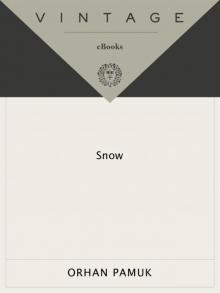 Snow
Snow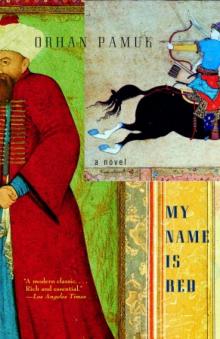 My Name is Red
My Name is Red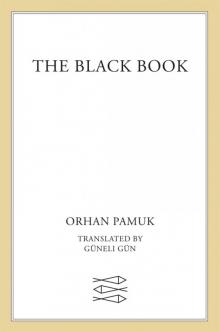 The Black Book
The Black Book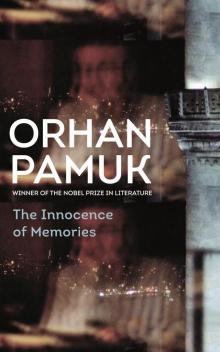 The Innocence of Memories
The Innocence of Memories The White Castle
The White Castle Other Colors
Other Colors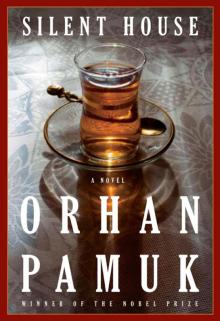 Silent House
Silent House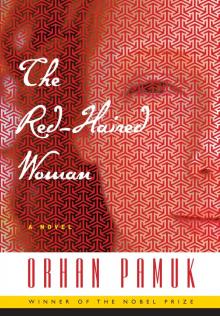 The Red-Haired Woman
The Red-Haired Woman The Museum of Innocence
The Museum of Innocence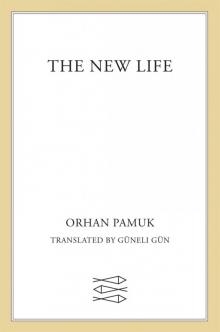 The New Life
The New Life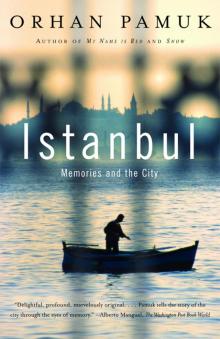 Istanbul
Istanbul